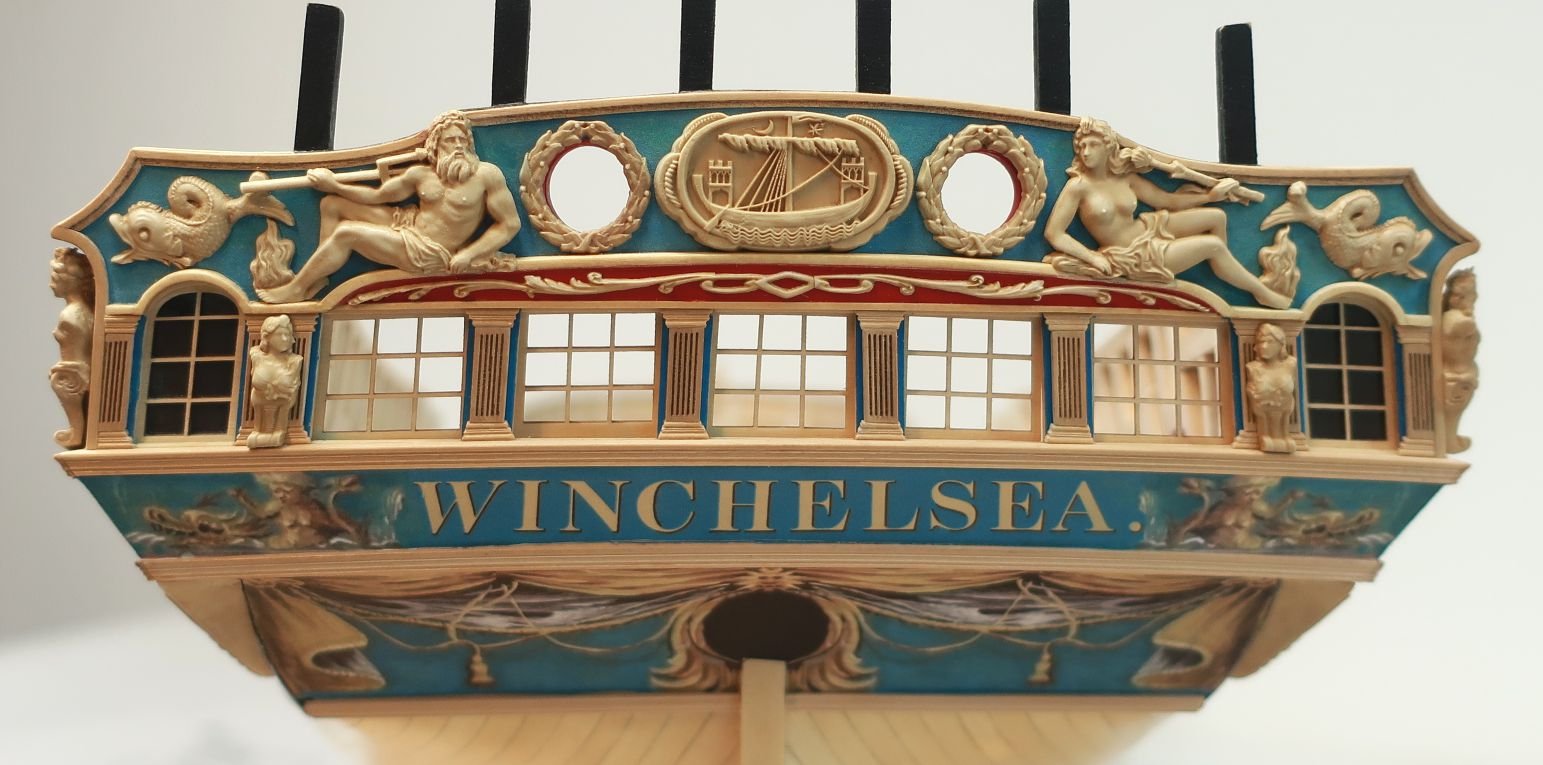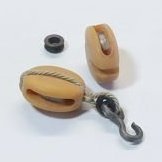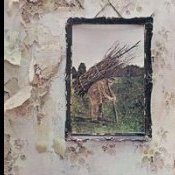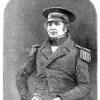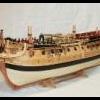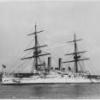-
Posts
9,491 -
Joined
-
Last visited
Reputation Activity
-
 Chuck got a reaction from Obormotov in Medway Longboat 1742 by Chuck - FINISHED - 1/2" scale
Chuck got a reaction from Obormotov in Medway Longboat 1742 by Chuck - FINISHED - 1/2" scale
Same with this one...but there will be no comparison in my opinion.
-
 Chuck got a reaction from Obormotov in Medway Longboat 1742 by Chuck - FINISHED - 1/2" scale
Chuck got a reaction from Obormotov in Medway Longboat 1742 by Chuck - FINISHED - 1/2" scale
I am working on having the package available to build the hull by mid September if everything works out. Then a rigging and masting package will follow after.
Chuck
-
 Chuck got a reaction from Elijah in Medway Longboat 1742 by Chuck - FINISHED - 1/2" scale
Chuck got a reaction from Elijah in Medway Longboat 1742 by Chuck - FINISHED - 1/2" scale
Same with this one...but there will be no comparison in my opinion.
-
 Chuck got a reaction from Elijah in Medway Longboat 1742 by Chuck - FINISHED - 1/2" scale
Chuck got a reaction from Elijah in Medway Longboat 1742 by Chuck - FINISHED - 1/2" scale
I am working on having the package available to build the hull by mid September if everything works out. Then a rigging and masting package will follow after.
Chuck
-
 Chuck got a reaction from thibaultron in Medway Longboat 1742 by Chuck - FINISHED - 1/2" scale
Chuck got a reaction from thibaultron in Medway Longboat 1742 by Chuck - FINISHED - 1/2" scale
I am working on having the package available to build the hull by mid September if everything works out. Then a rigging and masting package will follow after.
Chuck
-
 Chuck got a reaction from JeffT in Medway Longboat 1742 by Chuck - FINISHED - 1/2" scale
Chuck got a reaction from JeffT in Medway Longboat 1742 by Chuck - FINISHED - 1/2" scale
I am working on having the package available to build the hull by mid September if everything works out. Then a rigging and masting package will follow after.
Chuck
-
 Chuck got a reaction from thibaultron in Medway Longboat 1742 by Chuck - FINISHED - 1/2" scale
Chuck got a reaction from thibaultron in Medway Longboat 1742 by Chuck - FINISHED - 1/2" scale
Same with this one...but there will be no comparison in my opinion.
-
 Chuck got a reaction from Erebus and Terror in Medway Longboat 1742 by Chuck - FINISHED - 1/2" scale
Chuck got a reaction from Erebus and Terror in Medway Longboat 1742 by Chuck - FINISHED - 1/2" scale
I am working on having the package available to build the hull by mid September if everything works out. Then a rigging and masting package will follow after.
Chuck
-
 Chuck got a reaction from Canute in Medway Longboat 1742 by Chuck - FINISHED - 1/2" scale
Chuck got a reaction from Canute in Medway Longboat 1742 by Chuck - FINISHED - 1/2" scale
Same with this one...but there will be no comparison in my opinion.
-
 Chuck got a reaction from davyboy in Medway Longboat 1742 by Chuck - FINISHED - 1/2" scale
Chuck got a reaction from davyboy in Medway Longboat 1742 by Chuck - FINISHED - 1/2" scale
Same with this one...but there will be no comparison in my opinion.
-
 Chuck got a reaction from Rustyj in Medway Longboat 1742 by Chuck - FINISHED - 1/2" scale
Chuck got a reaction from Rustyj in Medway Longboat 1742 by Chuck - FINISHED - 1/2" scale
Same with this one...but there will be no comparison in my opinion.
-
 Chuck got a reaction from Jack12477 in Medway Longboat 1742 by Chuck - FINISHED - 1/2" scale
Chuck got a reaction from Jack12477 in Medway Longboat 1742 by Chuck - FINISHED - 1/2" scale
Same with this one...but there will be no comparison in my opinion.
-
 Chuck got a reaction from mtaylor in Medway Longboat 1742 by Chuck - FINISHED - 1/2" scale
Chuck got a reaction from mtaylor in Medway Longboat 1742 by Chuck - FINISHED - 1/2" scale
Same with this one...but there will be no comparison in my opinion.
-
 Chuck got a reaction from Obormotov in Medway Longboat 1742 by Chuck - FINISHED - 1/2" scale
Chuck got a reaction from Obormotov in Medway Longboat 1742 by Chuck - FINISHED - 1/2" scale
The outboard edge of the caprail was thinned down...it was easier to do this while holding the hull upside down. You want to leave 1/32" overhang with the cap rail. But that is a bit excessive but for now it is good to leave it a bit more. The top of the cap rail will be painted red. I will inevitably get paint on the outside edge which should remain bright, so once the cap rail is painted I will sand it nice and clean and make it less of an overhang.
Then it was time to fair inboard which always makes a mess. The goal here is to careful fair the frames so they get gradually thinner as they work their way to the sheer. In our case, the goal is to reduce the cap rail to a minimum width of 5/32". Any wider would look way out of scale. If you can manage a bit narrower that is even better. You can see in the photos what mine looks like and its 5/32" wide. There will be one strake inboard that is 1/32" thick. So that would make the overall width 3/16". So after I install this I will sand it a bit thinner then paint. Then I will sand outboard edge again and the results should leave a cap rail that is just under 3/16" wide.
Then the interior was cleaned up a bit and I applied a coat of wipe on poly. You can see the difference in the before and after photo and see how the cap rail was shaped etc....especially at the bow. I used 220 grit sand paper to fair the inside because anything coarser would grab the frames and possibly break them if they werent glued to the planking securely. Slow and steady is the way!!! 😊
Note that the inside edge of the cap rail at the bow is flush with the aft edge of the stem. This is what you are shooting for.
The aft edge is sanded flush with the sides of the transom and then the shape of the transom on each side was tweaked to clean everything up. I still have some minor tweaking to do but its just about done and ready for the next step.
-
 Chuck got a reaction from Elijah in Medway Longboat 1742 by Chuck - FINISHED - 1/2" scale
Chuck got a reaction from Elijah in Medway Longboat 1742 by Chuck - FINISHED - 1/2" scale
No ...I kind of just wing it but I am careful. I take a about a three inch long piece of sandpaper and cup it to a curve when sanding inside. I usually go in one direction only to avoid catching a corner of the sandpaper on a frame. I will sand from each end towards mid-ship...or in this case, mid-boat.
-
 Chuck got a reaction from Obormotov in Medway Longboat 1742 by Chuck - FINISHED - 1/2" scale
Chuck got a reaction from Obormotov in Medway Longboat 1742 by Chuck - FINISHED - 1/2" scale
I dont clamp my planks. Clamps arent needed ever....it just complicates things and makes it more difficult. At least for me.
If you shape your planks properly and pre bend them they should not need any clamps. I take my time tweaking, bending and twisting ahead of time. I will test each and every plank over and over again before I ever glue it into position. Its not something that happens immediately after spiling a plank. Even after having a laser cut plank already shaped, it is close to fitting well..... but never perfect. There may be gaps and high spots because of how I placed the previous plank on the hull. Its an inexact process. There may be slight gaps between it and the previous strake. So I use sandpaper and sanding sticks to bevel a bit more.....or very lightly remove a high spot that might prevent an area next to it from fitting tightly. I will remove just a hair and then retest. I will do this until the plank fits snug against the previous strake all along its length. I may also re bend or re-twist using heat. Then test some more. I could easily spend 45 minutes to an hour on one plank if its giving issues. I may over bevel or over twist and end up screwing it up. So I toss it and make another.
For all of my builds I use Titebond exclusively....except for planking. All of my planking is held to the frames with CA. I add a drop or two of CA with a toothpick to just two or three frames being careful to be very neat. Then I glue the plank to those few frames. Then I flex the plank so I can add some more CA to the next two frames...lifting it slightly to reach under it with my toothpick glue applicator....position and press the plank against those frames. I will slowly work my way down the length of the plank a few frames at a time making sure it tightly fits against the previous strake. I just hold it with my fingers for a few seconds and press it flat against the frames. The glue will hold and no forcing is needed, because the shape was good and the twist and bend was good before I started gluing.
Hope that makes sense. At times when I have to sand a high spot off the edge of a plank so it fits tightly against the plank already on the hull, I will have to make a mental note to adjust the next strake so I can stay faithful to my tick marks and planking plan that I made while lining out. This is what prevents the run of the planking from getting too waavy or out of wack. Without those tick marks as a guide I would be lost, with or without pre spiled and laser cut planks.
I hope this rather lengthy description makes sense. But this is basically my process. No magic just slow and methodical, No special clamping procedure other than my fingers. test ....shape .....then retest....and finally glue. Its hard to describe in writing.
One thing I will mention however. I have been watching a lot of people plank hulls over the years. In most cases the planks they are using are way too thick. The thicker the plank the harder it is to glue it into position. I rarely use planking thicker than 3/64" thick. If I need a thicker plank like in this case....I would rather use two layers than try to bend and twist a 1/16" thick strip or a 5/64" thick strip. That is just nuts. I have watched some people try and bend really thick planks for the wales...why in the world does this make sense when after using several layers nobody can ever tell the difference. Like on those Hahn models you are building. I am amazed at the thickness of the wales and you guys try to force one big thick chunk of wood into position with or without pre-bending and twisting. Its something I will never understand.
-
 Chuck got a reaction from jml1083 in Medway Longboat 1742 by Chuck - FINISHED - 1/2" scale
Chuck got a reaction from jml1083 in Medway Longboat 1742 by Chuck - FINISHED - 1/2" scale
The outboard edge of the caprail was thinned down...it was easier to do this while holding the hull upside down. You want to leave 1/32" overhang with the cap rail. But that is a bit excessive but for now it is good to leave it a bit more. The top of the cap rail will be painted red. I will inevitably get paint on the outside edge which should remain bright, so once the cap rail is painted I will sand it nice and clean and make it less of an overhang.
Then it was time to fair inboard which always makes a mess. The goal here is to careful fair the frames so they get gradually thinner as they work their way to the sheer. In our case, the goal is to reduce the cap rail to a minimum width of 5/32". Any wider would look way out of scale. If you can manage a bit narrower that is even better. You can see in the photos what mine looks like and its 5/32" wide. There will be one strake inboard that is 1/32" thick. So that would make the overall width 3/16". So after I install this I will sand it a bit thinner then paint. Then I will sand outboard edge again and the results should leave a cap rail that is just under 3/16" wide.
Then the interior was cleaned up a bit and I applied a coat of wipe on poly. You can see the difference in the before and after photo and see how the cap rail was shaped etc....especially at the bow. I used 220 grit sand paper to fair the inside because anything coarser would grab the frames and possibly break them if they werent glued to the planking securely. Slow and steady is the way!!! 😊
Note that the inside edge of the cap rail at the bow is flush with the aft edge of the stem. This is what you are shooting for.
The aft edge is sanded flush with the sides of the transom and then the shape of the transom on each side was tweaked to clean everything up. I still have some minor tweaking to do but its just about done and ready for the next step.
-
 Chuck got a reaction from Ryland Craze in Medway Longboat 1742 by Chuck - FINISHED - 1/2" scale
Chuck got a reaction from Ryland Craze in Medway Longboat 1742 by Chuck - FINISHED - 1/2" scale
No ...I kind of just wing it but I am careful. I take a about a three inch long piece of sandpaper and cup it to a curve when sanding inside. I usually go in one direction only to avoid catching a corner of the sandpaper on a frame. I will sand from each end towards mid-ship...or in this case, mid-boat.
-
 Chuck got a reaction from thibaultron in Medway Longboat 1742 by Chuck - FINISHED - 1/2" scale
Chuck got a reaction from thibaultron in Medway Longboat 1742 by Chuck - FINISHED - 1/2" scale
No ...I kind of just wing it but I am careful. I take a about a three inch long piece of sandpaper and cup it to a curve when sanding inside. I usually go in one direction only to avoid catching a corner of the sandpaper on a frame. I will sand from each end towards mid-ship...or in this case, mid-boat.
-
 Chuck got a reaction from Erebus and Terror in Medway Longboat 1742 by Chuck - FINISHED - 1/2" scale
Chuck got a reaction from Erebus and Terror in Medway Longboat 1742 by Chuck - FINISHED - 1/2" scale
The outboard edge of the caprail was thinned down...it was easier to do this while holding the hull upside down. You want to leave 1/32" overhang with the cap rail. But that is a bit excessive but for now it is good to leave it a bit more. The top of the cap rail will be painted red. I will inevitably get paint on the outside edge which should remain bright, so once the cap rail is painted I will sand it nice and clean and make it less of an overhang.
Then it was time to fair inboard which always makes a mess. The goal here is to careful fair the frames so they get gradually thinner as they work their way to the sheer. In our case, the goal is to reduce the cap rail to a minimum width of 5/32". Any wider would look way out of scale. If you can manage a bit narrower that is even better. You can see in the photos what mine looks like and its 5/32" wide. There will be one strake inboard that is 1/32" thick. So that would make the overall width 3/16". So after I install this I will sand it a bit thinner then paint. Then I will sand outboard edge again and the results should leave a cap rail that is just under 3/16" wide.
Then the interior was cleaned up a bit and I applied a coat of wipe on poly. You can see the difference in the before and after photo and see how the cap rail was shaped etc....especially at the bow. I used 220 grit sand paper to fair the inside because anything coarser would grab the frames and possibly break them if they werent glued to the planking securely. Slow and steady is the way!!! 😊
Note that the inside edge of the cap rail at the bow is flush with the aft edge of the stem. This is what you are shooting for.
The aft edge is sanded flush with the sides of the transom and then the shape of the transom on each side was tweaked to clean everything up. I still have some minor tweaking to do but its just about done and ready for the next step.
-
 Chuck got a reaction from coxswain in Medway Longboat 1742 by Chuck - FINISHED - 1/2" scale
Chuck got a reaction from coxswain in Medway Longboat 1742 by Chuck - FINISHED - 1/2" scale
The outboard edge of the caprail was thinned down...it was easier to do this while holding the hull upside down. You want to leave 1/32" overhang with the cap rail. But that is a bit excessive but for now it is good to leave it a bit more. The top of the cap rail will be painted red. I will inevitably get paint on the outside edge which should remain bright, so once the cap rail is painted I will sand it nice and clean and make it less of an overhang.
Then it was time to fair inboard which always makes a mess. The goal here is to careful fair the frames so they get gradually thinner as they work their way to the sheer. In our case, the goal is to reduce the cap rail to a minimum width of 5/32". Any wider would look way out of scale. If you can manage a bit narrower that is even better. You can see in the photos what mine looks like and its 5/32" wide. There will be one strake inboard that is 1/32" thick. So that would make the overall width 3/16". So after I install this I will sand it a bit thinner then paint. Then I will sand outboard edge again and the results should leave a cap rail that is just under 3/16" wide.
Then the interior was cleaned up a bit and I applied a coat of wipe on poly. You can see the difference in the before and after photo and see how the cap rail was shaped etc....especially at the bow. I used 220 grit sand paper to fair the inside because anything coarser would grab the frames and possibly break them if they werent glued to the planking securely. Slow and steady is the way!!! 😊
Note that the inside edge of the cap rail at the bow is flush with the aft edge of the stem. This is what you are shooting for.
The aft edge is sanded flush with the sides of the transom and then the shape of the transom on each side was tweaked to clean everything up. I still have some minor tweaking to do but its just about done and ready for the next step.
-
 Chuck got a reaction from Canute in Medway Longboat 1742 by Chuck - FINISHED - 1/2" scale
Chuck got a reaction from Canute in Medway Longboat 1742 by Chuck - FINISHED - 1/2" scale
No ...I kind of just wing it but I am careful. I take a about a three inch long piece of sandpaper and cup it to a curve when sanding inside. I usually go in one direction only to avoid catching a corner of the sandpaper on a frame. I will sand from each end towards mid-ship...or in this case, mid-boat.
-
 Chuck got a reaction from Elijah in Medway Longboat 1742 by Chuck - FINISHED - 1/2" scale
Chuck got a reaction from Elijah in Medway Longboat 1742 by Chuck - FINISHED - 1/2" scale
The outboard edge of the caprail was thinned down...it was easier to do this while holding the hull upside down. You want to leave 1/32" overhang with the cap rail. But that is a bit excessive but for now it is good to leave it a bit more. The top of the cap rail will be painted red. I will inevitably get paint on the outside edge which should remain bright, so once the cap rail is painted I will sand it nice and clean and make it less of an overhang.
Then it was time to fair inboard which always makes a mess. The goal here is to careful fair the frames so they get gradually thinner as they work their way to the sheer. In our case, the goal is to reduce the cap rail to a minimum width of 5/32". Any wider would look way out of scale. If you can manage a bit narrower that is even better. You can see in the photos what mine looks like and its 5/32" wide. There will be one strake inboard that is 1/32" thick. So that would make the overall width 3/16". So after I install this I will sand it a bit thinner then paint. Then I will sand outboard edge again and the results should leave a cap rail that is just under 3/16" wide.
Then the interior was cleaned up a bit and I applied a coat of wipe on poly. You can see the difference in the before and after photo and see how the cap rail was shaped etc....especially at the bow. I used 220 grit sand paper to fair the inside because anything coarser would grab the frames and possibly break them if they werent glued to the planking securely. Slow and steady is the way!!! 😊
Note that the inside edge of the cap rail at the bow is flush with the aft edge of the stem. This is what you are shooting for.
The aft edge is sanded flush with the sides of the transom and then the shape of the transom on each side was tweaked to clean everything up. I still have some minor tweaking to do but its just about done and ready for the next step.
-
 Chuck got a reaction from Obormotov in Medway Longboat 1742 by Chuck - FINISHED - 1/2" scale
Chuck got a reaction from Obormotov in Medway Longboat 1742 by Chuck - FINISHED - 1/2" scale
Thanks Dirk,
Moving right along, the cap rail was added. It is made of 4 laser cut pieces. They are made over sized and we will thin them down considerably later.
A few things worth noting are the cut-away for the roller at the bow. This is on the port side only. So I had to remember to put it on the right side. A 50-50 shot of screwing that up.
Anyway, you will notice that I penciled in some reference lines to show everyone what this will eventually be shaped like. But this will happen gradually as we need to take this in steps. There are many details to be added which are easier with an over sized cap rail.
At the stern you will notice how the cap rail goes UNDER the wings of the transom. This is important to note as you are planking. There will be a gap between the plank and the transom and that is normal and as designed so the cap rail will fit. It is 1/16" thick.
The reason why we cant just start thinning down the cap rail as usual is because this longboat has an interesting feature at the bow we must complete first. Normally we would sand the cap rail flush with the outboard planking. But before we can do that, we have to fabricate the bolsters at the bow. There are two bolsters on each side of the stem. This "beefs" up the stem and helps support the area with the roller. In addition, it strengthens everything up there to help support the bowsprit iron and bowsprit.
You can kind of see the bolsters in this photo of the contemporary model.
Here is what ours will look like.
On every model that I make there are at least one or two parts that are quite a challenge to make. On this model, it will be these bolsters. There are many compound angles to consider. But if you plan it out ahead of time it will go smoothly. You will start with a laser cut blank. Because these parts have the potential for many attempts to end up in the trash....I will provide everyone with eight blanks so you will have plenty of fun.
But I will explain step by step how I shaped these bolsters and hopefully it will become clear.
First, I recommend starting with the starboard side which has no roller. The blanks are all the same so it doesnt matter which ones you choose. Below you can see that if you hold the blanks against the stem tightly that the aft edge will need to be beveled quite a bit so it sits flush against the hull planking. This is the first thing that you should do and dont worry about any gaps at the top too where the bolster sits under the cap rail. Just concentrate on the getting a snug tight fit against the planking first.
I have guestimated the amount of bevel required below by marking it in pencil for you guys. Note how there is more of a bevel towards the bottom of the bolster.
I used sand paper and files to create the bevel. I stopped and tested its fit dozens of times as I tweaked it. The photo below shows that its almost there. There is plenty of meat on these blanks so you can sand and reshape quite a bit. So just keep going until it fits good against the planking.
Once you are satisfied, You can do the same thing with the top edge and how it fits under the cap rail. It should also be a tight fit here. In the previous photo you can see it fits pretty good without any tweaking. But I will give it a few passes anyway.
Next you want to draw in the line that represents the concave shape of the bolster on its outside face. It will taper down to just 1/32" thick at the bottom. This line should follow the run of the sheer and planks. You should place the line even with the bottom of the first plank. I placed mine a bit low in the photo below...so adjust yours to be even with the plank line.
Once completed the two bolsters will look like this. And after you create the concave shape you can trim the bottom so it lines up with the bottom of the third plank. Its over-sized and will need to be trimmed. In addition, the front edge will eventually be sanded flush with the stem. But right now it hangs over quite a bit. That is OK. Just deal with shaping them and trimming the bottom edge right now.
Note how you will need to make a matching pair of these. The only difference is that a small notch needs to be carved out of the top of the one for the roller. You can see that below. It adds more room for the roller itself. Its shown on the left.
Glue them into position and then sand the front face of both flush with the stem. Thats all there is to it......easy-peasy right???
Dont worry its not too bad. JUst go slow and take your time. You will be able to adjust the shape a bit after its glued into position as well. This will make it easier to get a matching pair port and starboard. Dont sand the side of the cap rail yet!!!! Other than the front edge, leave it as is near the bolsters. We will be sanding other parts of the cap rail first.
-
 Chuck got a reaction from Obormotov in Medway Longboat 1742 by Chuck - FINISHED - 1/2" scale
Chuck got a reaction from Obormotov in Medway Longboat 1742 by Chuck - FINISHED - 1/2" scale
Thank you so much guys. It was time for the fun part.....to remove the buildboard and break away the frame centers.
The first step was to remove the braces for the stem and stern post. At the stern post I just pushed them free from the bottom. Then I shook them out.
After I removed the tape holding both halves of the buildboard together, I carefully and gently coaxed one half of the buildboard free. Dont rush this and slowly pry it off a little at a time working one side then the other. It will be tricky to get it started especially on a humid day. But once it starts wiggling free it will come off readily.
Then using your special tool of choice (everyone has their favorite) you can carefully and slowly cut through the tabs on each side of the frame centers. Then bend them back and forth to snap them out. Do this one at a time. Dont worry about breaking any frames because that will not happen if you have glued the top of your frames securely to the sheer plank. If when you start cutting the tab you see that the entire frame is loose and not secured to the sheer plank, stop and apply some CA. Let it "wick" down to glue the frame to the plank. Then resume cutting that tab.
I used the thin saw on the left this time but often use a simple file as well. Whatever you are comfortable with.
Here is a shot of a frame center on the barge being removed as I didnt take any of the longboat. Same principle. So I didnt want to duplicate in order save some time.
And finally some pictures of the model after removing all of the frame centers.
The next step will be fine tuning the sheer. I will sand the tops of the frames flat to the sheer and also sand the sheer so it has a good smooth run. I dont want any dips or high spots. These can be seen by viewing the hull head-on and stern -on at various angles. Once satisfied I will add the caprail which is laser cut. Hopefully over the next day or so. 😊

